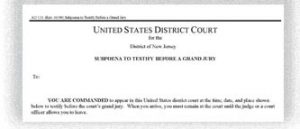Milan Patel and four other defendants were charged both by the SEC and the Department of Justice for their role in an options trading scheme in the Northern District of Georgia. Another defendant, Bart Ross was sentenced a few years ago for the same scheme. In total, In total, the defendants executed more than 500 trades and made $2,651,320 in profits as a result of their fraudulent scheme. And just last week, Mr. Patel was sentenced.
According to the NDGA DOJ news release:
According to Acting U.S. Attorney Moultrie, the charges and other information presented in court: Between approximately October 2017 and January 2020, Milan Patel, Bart Ross, Mark Melnick, Anthony Salandra, and Charles Parrino conspired to trade securities—primarily short-term call options—in large, publicly traded companies based on materially false rumors about those companies that they generated and disseminated. These materially false rumors were intended to increase the price of the securities (both the underlying stock and options).
 Georgia Criminal Defense Lawyers Blog
Georgia Criminal Defense Lawyers Blog


